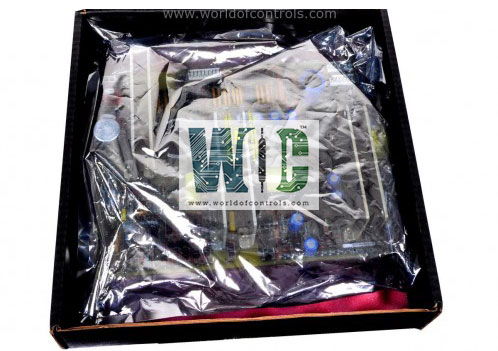SPECIFICATIONS
Part No.: IS200DDPTH1A
Manufacturer: General Electric
Country of Manufacture: United States of America (USA)
Technology: Surface mount
Temperature: -30 to 65oC
Product Type: Dynamic Pressure Transducer Terminal Board
Availability: In Stock
Series: Mark VI
Functional Description
IS200DDPTH1A is a Dynamic Pressure Transducer Terminal Board developed by GE. It is a part of the Mark VI control system. The DDPT board is specifically engineered to support the detection and analysis of pressure oscillations in gas turbine combustion chambers, which can affect performance, emissions, and mechanical stability. By converting pressure signals into conditioned electrical signals, the DDPT helps turbine operators monitor combustion dynamics in real time.
Functionality and Compatibility
- Designed as a compact DIN-rail-mounted acoustic terminal board, accepts input from up to two dynamic pressure transducers, commonly supplied by leading vendors such as Vibro-meter or Bently-Nevada. These sensors capture subtle pressure fluctuations in the turbine’s combustion chamber, which are then routed through the DDPT board to the main I/O processing board using two dedicated cables. The system is ideal for high-performance, real-time monitoring of combustion acoustics.
- The board is built to operate safely in hazardous environments, fully compliant with Class 1, Division 2 standards for the presence of flammable gases. This makes it suitable for deployment in industrial settings such as gas-fired power plants and other critical applications.
Installation
- The board is housed in a plastic mounting holder, which securely slides onto a DIN-rail inside the control cabinet. This modular installation approach allows for flexibility and ease of access during maintenance or replacement.
- The board features a permanently mounted Euro-Block terminal block with 42 terminals, providing ample space for wiring two pressure transducers. These terminal blocks are designed for direct screw-type connections, ensuring solid and vibration-resistant electrical contact. Transducers are typically connected using #18 AWG shielded twisted triplet wiring, which helps reduce noise and electromagnetic interference in signal transmission.
- Additionally, there are ten dedicated screws for SCOM (signal common or ground) connections, ensuring proper shielding and grounding of the input signals for accurate and stable performance.
Diagnostics
- The I/O board performs continuous diagnostics to monitor both signal integrity and hardware status. It actively checks for issues such as open-wire conditions on the connected pressure transducers. If any input signal deviates from the predefined operational limits, the I/O board automatically generates a fault to alert the system.
- Each cable connector on the DDPT terminal board contains a built-in identification (ID) device, which is a read-only chip. This chip stores essential information, including the terminal board’s serial number, board type, and revision number. During system startup and operation, the I/O board communicates with these ID devices to verify compatibility. If there is any mismatch or inconsistency, the system will detect a hardware incompatibility fault, ensuring that only the correct and intended components are in use.
The WOC team can always help you with your Mark VI requirements. For more information, please contact WOC.
Frequently Asked Questions
What is IS200DDPTH1A?
It is a Dynamic Pressure Transducer Terminal Board developed by GE under the Mark VI series.
What happens if a transducer signal goes out of range?
If any signal goes beyond the pre-set thresholds, the I/O board automatically triggers a fault alert, allowing the system to respond or shut down as needed.
How does the system identify the connected terminal board?
Each cable connector has a read-only ID chip that contains the terminal board’s serial number, board type, and revision number. This ensures the I/O board recognizes the correct hardware.
What if there’s a mismatch between the ID chip and the I/O board?
A mismatch results in a hardware incompatibility fault, which helps prevent incorrect or incompatible terminal boards from being used in the system.
